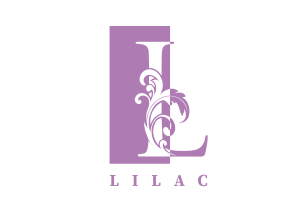KYOTO

Kyoto is a city in western Japan that was the capital of Japan for over 1,000 years. It is known for its many temples, shrines, and gardens, and is considered to be one of the most beautiful cities in the world.
Here are some of the most popular tourist attractions in Kyoto
Kiyomizu-dera:
Kinkaku-ji:
This temple is also known as the Golden Pavilion. It is covered in gold leaf, and it is one of the most photographed buildings in Japan.
Ginkaku-ji:
This temple is also known as the Silver Pavilion. It is not covered in silver, but it is still a beautiful building.
Arashiyama Bamboo Forest:
This forest is a must-see for any visitor to Kyoto. The bamboo stalks are tall and slender, and they create a magical atmosphere.
Nanzen-ji:
This temple is located in the northeast of Kyoto, and it is a great place to experience a more traditional tea ceremony.Nanzen-ji: This temple is located in the northeast of Kyoto, and it is a great place to experience a more traditional tea ceremony.
Shoren-in:
This temple is located in the northwest of Kyoto, and it is known for its beautiful garden. The tea ceremony at Shoren-in is conducted in the garden, which makes it a very peaceful and relaxing experience.
Here are some of the most popular places to experience a tea ceremony in Kyoto
Tea ceremonies in Kyoto typically cost between ¥3,000 and ¥5,000 per person. However, there are also some teahouses that offer less expensive tea ceremonies for around ¥2,000 per person. If you are interested in experiencing a tea ceremony in Kyoto, we recommend booking your reservation in advance, especially if you are visiting during the peak tourist season.
Gion:
This is the traditional geisha district of Kyoto, and there are many teahouses in this area that offer tea ceremonies.
Kyoto Imperial Palace:
This palace was the residence of the Japanese emperor for over 1,000 years. It is now open to the public for tours.
Wearing a kimono in Kyoto is a great way to experience Japanese culture and tradition. There are many kimono rental shops in Kyoto that can help you choose the perfect kimono for your occasion. You can also get your hair and makeup done at some shops.
Here are some tips for wearing a kimono in Kyoto
Choose a kimono that is appropriate for the weather. If it is hot, you may want to choose a light-colored kimono made from a natural fiber, such as cotton or silk. If it is cold, you may want to choose a heavier kimono made from a warmer fabric, such as wool or flannel.
Make sure the kimono is the right size for you. The kimono should be long enough to cover your feet, and the sleeves should be long enough to reach your wrists. Wear tabi socks with your kimono. Tabi socks are traditional Japanese socks that have a separate toe section
Tie your obi (belt) in a traditional knot. There are many different ways to tie an obi, so you may want to ask for help from the staff at the kimono rental shop.
Be respectful of the culture. When you are wearing a kimono, you should be respectful of the culture and traditions of Japan. This means avoiding wearing a kimono in a way that is considered to be immodest, such as wearing it without a bra or with your legs exposed. Wearing a kimono in Kyoto is a great way to experience Japanese culture and tradition. It is also a great way to feel elegant and beautiful. If you are planning a trip to Kyoto, I highly recommend renting a kimono and wearing it for at least one day.
Tea ceremony in Kyoto is a centuries-old tradition that is a great way to experience Japanese culture and hospitality. During a tea ceremony, guests are invited to participate in a simple ritual of preparing and drinking matcha, a powdered green tea.
The tea ceremony is conducted in a traditional Japanese teahouse, which is a small, simple room with tatami mats on the floor. The host of the ceremony will lead the guests through the steps of the ceremony, which includes preparing the matcha, washing the utensils, and serving the tea. The tea ceremony is a very formal event, and guests are expected to follow the host’s instructions carefully. However, it is also a very relaxing and enjoyable experience. The focus of the ceremony is on the simple act of preparing and drinking tea, and it is a great way to appreciate the beauty of Japanese culture.



